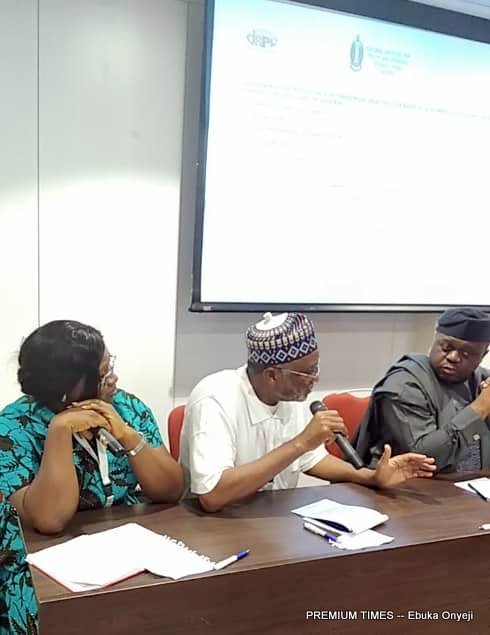A call on African countries to reinvigorate their quest for Universal Health Coverage (UHC) by 2030 rang out from the hills of Kigali, Rwanda’s capital, a fortnight ago. The event was one of the largest biennial health gatherings in the continent – the Africa Health Agenda International Conference 2019 (AHAIC).
To advance the critical conversations initiated in Nairobi, Kenya at AHAIC 2017, 1500 participants from over 40 countries gathered at the Kigali Convention Centre (KCC) between March 5 and 7 for this year’s conference.
The upbeat mood, buoyed in large part by the ambiance of the event centre, was interrupted by the urgency of seeking ways to tackle the numerous challenges bedeviling the health system in Africa.
Co-hosted by the Ministry of Health of Rwanda and the African Medical and Research Foundation (Amref Health Africa), AHAIC 2019 focused on the greatest health challenges facing Africa under the theme “2030 Now: Multi-sectoral Action to Achieve UHC in Africa”.
The participants confronted the stack reality that Africa is falling behind in achieving Sustainable Development Goal (SDG) Three, one of the 17 goals set by the United Nations General Assembly in 2015 for the year 2030.
Achieving UHC by 2030 is the central target of SDG 3.8.
Targets of SDG 3 include ending preventable deaths of newborns and children under five years of age by 2030.
However, five children under five years of age are still dying from preventable causes every five minutes in Africa, according to the World Health Organisation (WHO).
AHAIC, now in its second edition, arose from the need for home-grown solutions, innovations, political commitments and lessons from successes and setbacks of other countries in achieving affordable health for all.
Here are some of the talking points at the conference.
Affordable health for the poor and vulnerable
Providing an affordable option for Africa’s poorest will determine whether countries achieve SDG 3, which is to “ensure healthy lives and promote well-being for all” by 2030, Githinji Gitahi, CEO Amref Health, explained in his first press briefing.
“Financial protections for the vulnerable is embedded in what universal health coverage means by definition, which is a concept that overall looks at how to provide quality health services to people without them struggling to afford it.”
Eleven million Africans are pushed into poverty every year by medical expenses, according to the WHO.
In Sub-Saharan Africa, health services are mostly paid for out-of-pocket and those gravely affected already live far below the poverty line.
“Universal health coverage is about equity, not equality,” Gitahi said. “Services must first be built for the vulnerable. With that, governments show that the services are responding to equity.”
Poverty and ill health are intimately linked in many developing countries, particularly in Africa where public health services are severely strained. A report by the UK Institute of Development Studies suggests that public healthcare services often provide limited benefits to the poor.
Experts at the conference agreed that achieving UHC would require increased access for the marginalised populations and heightened financial support from both governments and public-private partnerships. “It would also require improved health service quality and ways to hold governments and health providers accountable to citizens.”
Health Insurance: Learning from Successes and Failures of other African Countries
One country’s success story is another’s gain, just as one country’s loss is another’s lesson.
AHAIC 2019 had both setbacks and success stories. A working and affordable Health insurance and finance mechanism is a major driver for UHC.
Host country, Rwanda and their neighbors, Kenya and Ethiopia were exemplified for advancing UHC through various health financing mechanisms.
In Rwanda, community-based insurance has provided “the modern social security we want for our people”, Rwanda’s Minister of State for Primary Health Care, Patrick Ndimubanzi, said.
This health insurance scheme is financed by both the national government and individuals through insurance and fees for services.
Members pay annual premiums at a flat rate based on their economic status, regardless of individual health risks, which can then be used for discounted treatments at community health centers.
Health insurance became mandatory for all individuals in 2008; in 2010 over 90 per cent of the Rwanda population was covered. In 2012, only about four per cent was uninsured.
This scheme increased the number of women delivering in health facilities from 50 percent in 2010 to 90 percent in 2015, Mr Ndimubanzi noted.
In Kenya, government appeared to have a larger plan of achieving UHC by 2022.
UHC hospital insurance pilot project is currently being tested in four regions troubled with high disease burdens.
Since the launch in December 2018, the government has offered free basic health care services to all citizens holding a UHC card — which required the presentation of national identification to register — and covers anyone in the household under 18.
“Today, 75 percent of all residents [in the pilot counties] have been registered and are holding a UHC card,” Rashid Abdi Aman, chief administrative secretary at the Kenya Ministry of Health, said. He explained that health programmes requiring registration may need to be adapted for those who lack identification papers.
Rwanda and Ethiopia were recognised for their exemplary efforts to expand health care access to their population.
While President Paul Kagame of Rwanda received the UHC Presidential Champion Award, Amir Aman, Ethiopian Minister of Health, got the UHC Ministerial Champion Award.
Setbacks: The Nigeria story
“…All I had built in the scheme now goes down the drain. It hurts”, said Dogo Muhammad Waziri, Past Executive Secretary, Nigeria’s Health Insurance Scheme (NHIS) in an emotional outburst.
Mr Dogo was a panelist at the side event at the conference organised by the Development Research and Project Centre (DRPC) in collaboration with the National Institute for Policy and Strategic Studies, (NIPPS) – the groups that led the Nigerian delegation.
<img data-attachment-id="322323" data-orig-file="https://media.premiumtimesng.com/wp-content/files/2019/03/WhatsApp-Image-2019-03-22-at-06.48.37.jpg" data-orig-size="800,451" data-comments-opened="1" data-image-meta="{"aperture":"0","credit":"Picasa","camera":"","caption":"","created_timestamp":"1553548998","copyright":"","focal_length":"0","iso":"0","shutter_speed":"0","title":"","orientation":"0"}" data-image-title="WhatsApp Image 2019-03-22 at 06.48.37" data-image-description="
The Nigeria delegation to the Africa Health Agenda International Conference
” data-medium-file=”https://i2.wp.com/media.premiumtimesng.com/wp-content/files/2019/03/WhatsApp-Image-2019-03-22-at-06.48.37.jpg?fit=526%2C297&ssl=1″ data-large-file=”https://i2.wp.com/media.premiumtimesng.com/wp-content/files/2019/03/WhatsApp-Image-2019-03-22-at-06.48.37.jpg?fit=604%2C341&ssl=1″ src=”https://onlinenigeria.com/wp-content/uploads/2019/03/views-from-rwanda-how-african-countries-can-achieve-universal-health-coverage.jpg” width=”600″ height=”338″ data-original-width=”600″ data-original-height=”338″ itemprop=”http://schema.org/image” title=”WhatsApp Image 2019-03-22 at 06.48.37″ alt=”The Nigeria delegation to the Africa Health Agenda International Conference” data-pagespeed-url-hash=”2986963210″>
The former executive secretary was dismayed by the failure of his country’s NHIS to deliver 14 years after inception.
“It hurts to see that NHIS has always been in the news for the wrong reasons.”
Reeling out the grim statistics, Nasirdeen Usman, the Secretary General of NIPPs who anchored the panel, said only five per cent of Nigerians are covered under the NHIS. Of that five per cent, he said only four per cent is in the formal sector with only one percent in the informal sector.
“It is as bad as that. In view of this, we want to interrogate why we still have a serious deficit in our journey to UHC.”
Many have traced the relatively poor coverage to the structure of the scheme which has been tainted with financial irregularities even before the embattled executive secretary of the scheme, Usman Yusuf, took over in 2016.
Both Mr Dogo and the current Chairperson of the NHIS governing board, Enyantu Ifenne, said the problem is from the act enabling the scheme.
It was resolved that the act should be reviewed and the scheme made compulsory and public inclined.
The last call: Abuja Declaration
The participants called on governments in Africa to take local actions on prior commitments they made, such as the 2016 Tokyo International Conference on African Development and signing of the Universal Health Coverage in Africa Framework for Action.
Adoption of the 2001 Abuja Declaration was the last and ultimate call, however.
It is the realisation of shortfalls in their health systems that made African governments commit in April 2001 to dedicate at least 15 per cent of their annual budgets to the health sector in what is now known as the ‘Abuja Declaration’.
Sixteen years later, only about seven countries — Rwanda, Botswana, Niger, Zambia, Malawi and Burkina Faso, Togo — have met the Abuja target. In 60 per cent of the countries, the health sector share of total government expenditure is below 10 per cent.
Nigeria that hosted the conference has never voted more than six per cent of its annual budget to the health sector.
The highest percentage since the declaration was in 2012 when 5.95 per cent of the budget was allocated to health.
“We need to educate our people because from this conference, I can see that many don’t know the real situation of our health sector”, Lanre Tejuoso, the Chairman, Nigeria’s Senate Committee on Health, told PREMIUM TIMES shortly after a panel discussion at the conference.
He said through good policies, education, and advocacy, the 15 percent benchmark is achievable and can also chart the road-map in achieving UHC.
Mr Tejuoso said the struggle for UHC has been tough in the Senate, noting that there are many unimplemented laws in Nigeria.
“First of all, I have to educate and lobby my colleagues on the need for health financing. I started with the Senate President…”, he said while explaining his role in the inclusion of the Basic Healthcare Provision Fund (BHCPF) into the country’s annual budget.
The BHCPF is the fundamental funding provision under the National Health Act and was appropriated for the first time in the 2018 budget since the Act was signed in 2014.
Round Up: “Health for All”
Ensuring that everyone has access to basic health services is a challenge and the key to the success of UHC. That was the key take-home that signaled the stirring end of this year’s conference.
“There is need to ensure that the quality of services is good enough to improve the health of the people who access them,” said Michel Sidibé who co-moderated a high-level ministerial panel in a compelling speech.
“We need to track the impact of UHC. Coverage is not enough, we need to be delivering quality, affordable, accessible services to all.
“The ultimate measure of success for UHC will be whether the poorest, the marginalised and the most vulnerable people are able to benefit.”
Eleven parliamentarians from Ghana, Kenya, Rwanda, Senegal, Tanzania, and Zambia launched the “Kigali UHC communiqué,” committing to strengthening health systems, addressing health inequities, supporting community health and ensuring universal access to immunisation to drive progress on UHC in their countries.
A new initiative, the Women in Global Health (WGH) Africa Regional Hub , was also launched as a strategy for a greater emphasis on gender equity in the leadership of global health within the continent.
Certainly, AHAIC 2019 has set the stage for the United Nations High-Level Meeting on Universal Health Coverage which will take place on 23 September 2019 during the United Nations General Assembly under the theme ‘Universal Health Coverage: Moving Together to Build a Healthier World.’
You may be interested

I Want To Take My Game To New Level –Lookman
Webby - November 13, 2024Super Eagles winger Ademola Lookman has reiterated his commitment to take his game to the next level.The Nigerian international, who…

AFCON 2025Q: Benin Republic Hit By Another Injury Blow
Webby - November 13, 2024Benin Republic will be without two more players for their 2025 Africa Cup of Nations qualifying matches against Nigeria and…

Dier Set To Depart Bayern In Summer
Webby - November 13, 2024Eric Dier is likely to leave Bayern Munich at the end of the season according to transfer expert and Sky…























![American Pastor, David Wilson Seen Eating The Box Of Woman Who Isn’t His Wife [Video]](https://onlinenigeria.com/wp-content/uploads/2019/10/american-pastor-david-wilson-seen-eating-the-box-of-woman-who-isnt-his-wife-video-150x150.jpg)






![BREAKING| Imo Govt. begins Remedial Work at Ekemele -Akabo Road, CUDUC resumes [PHOTOS]](https://onlinenigeria.com/wp-content/uploads/2019/08/breaking-imo-govt-begins-remedial-work-at-ekemele-akabo-road-cuduc-resumes-photos-150x150.jpg)

